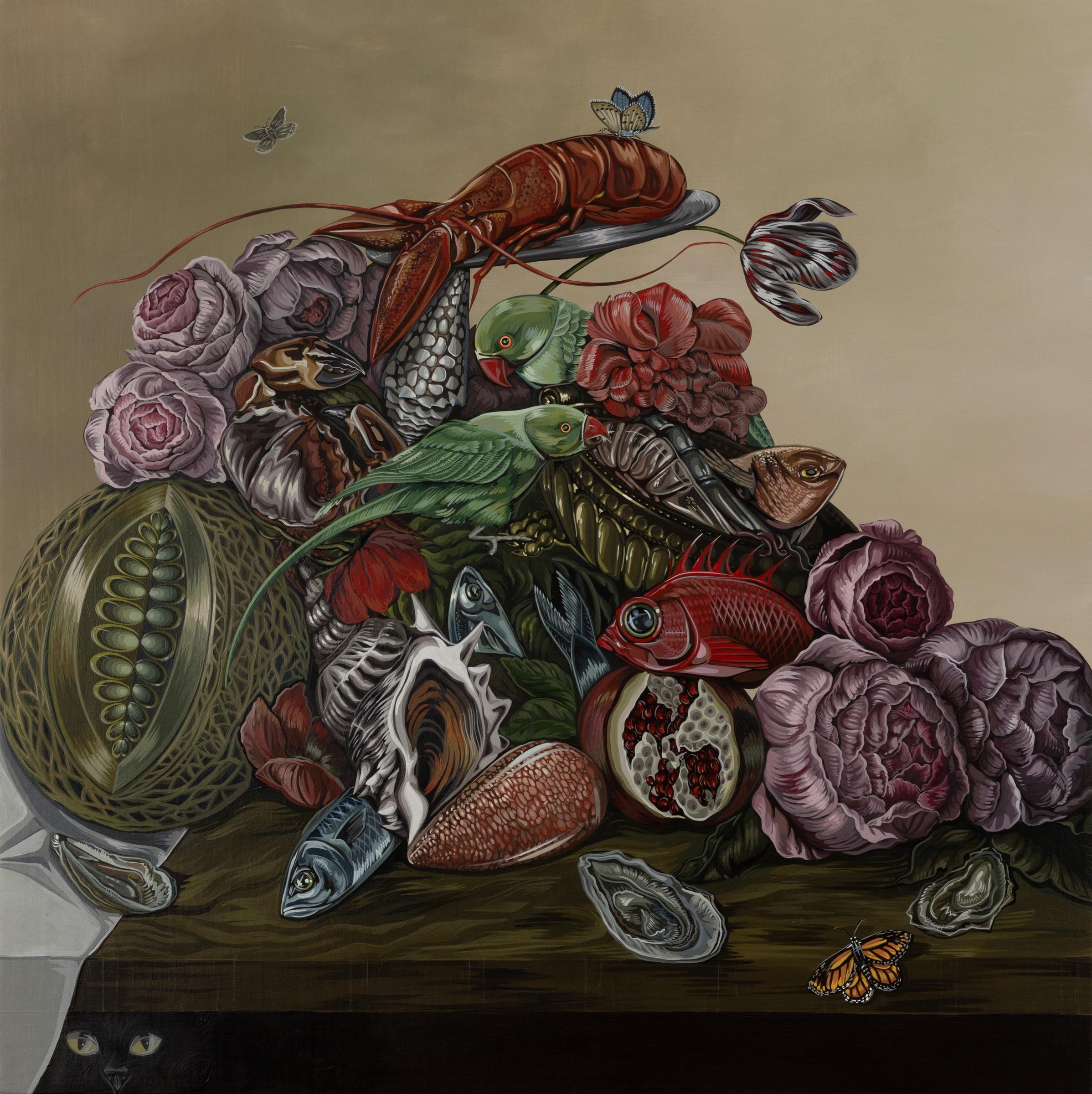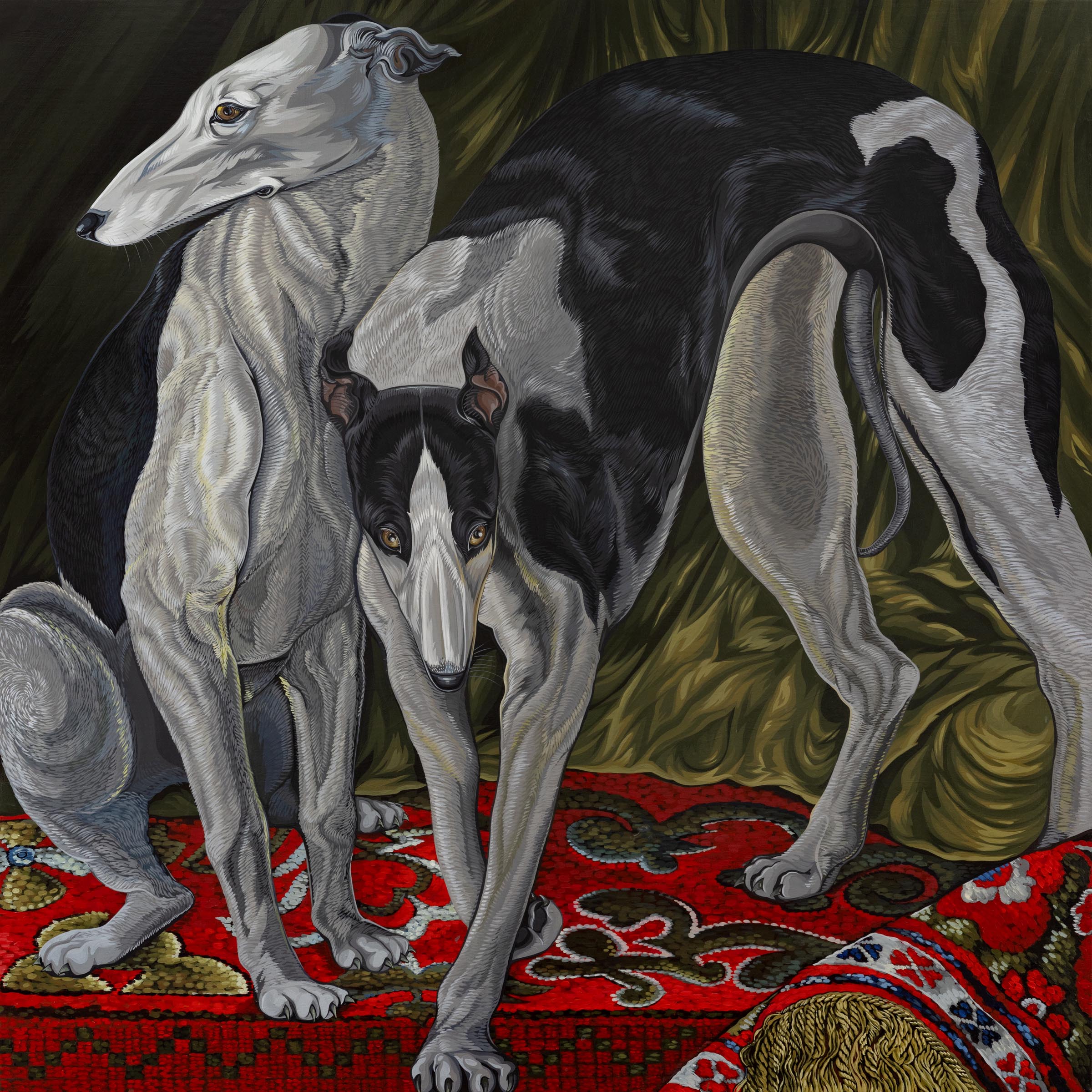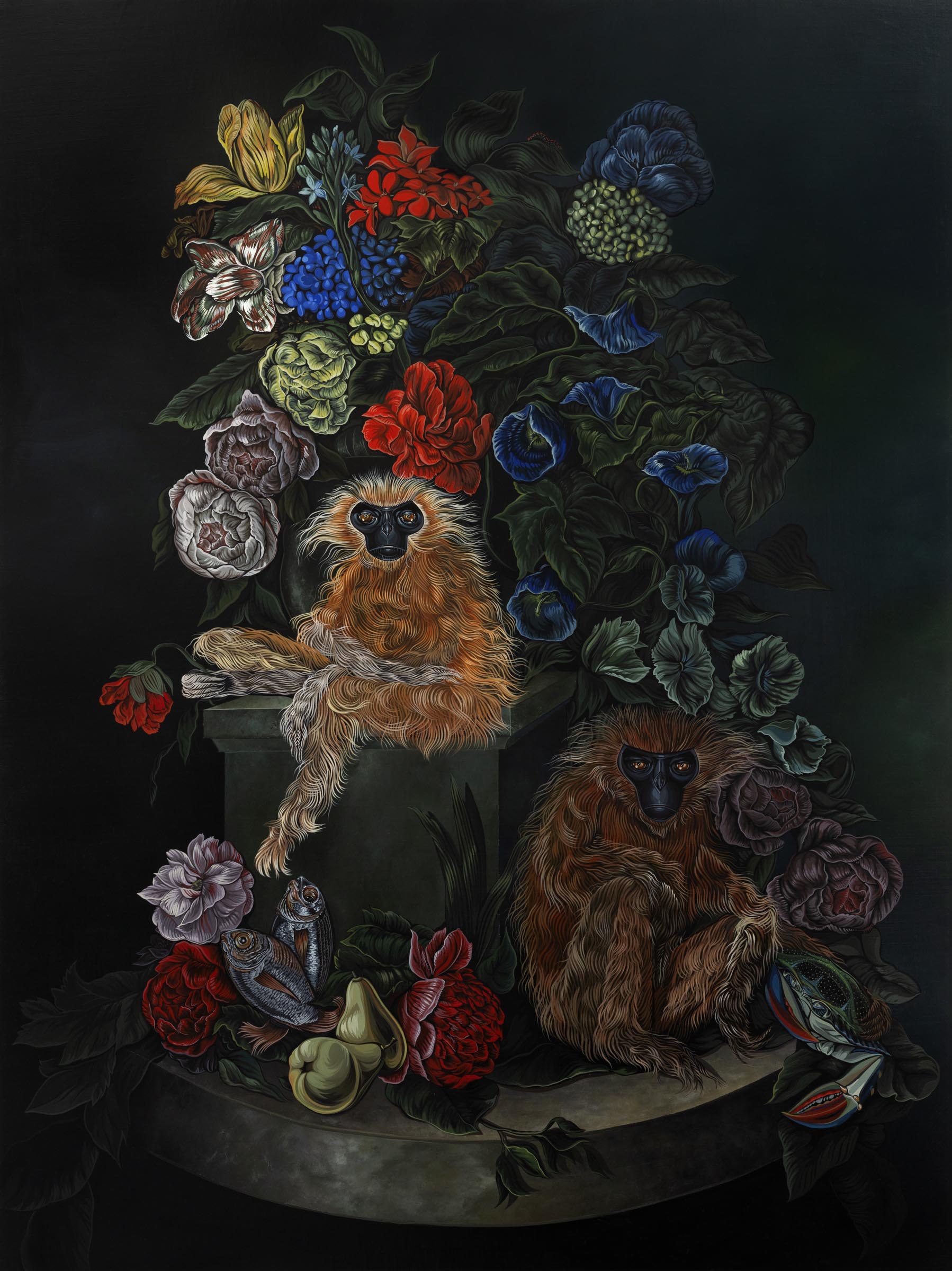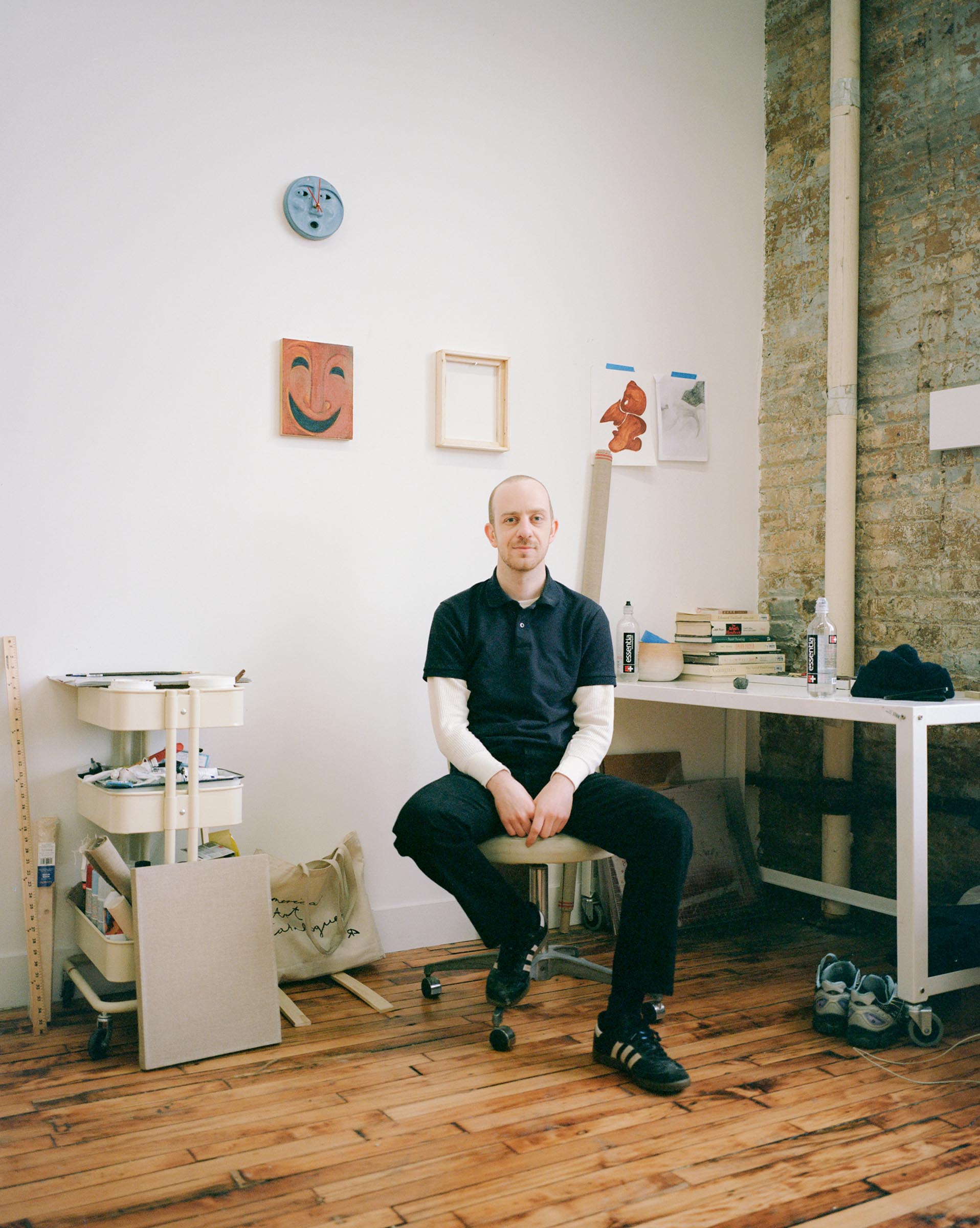
How did you get into making art?
Art has played an enormous role in my life since childhood. As a second-generation Polish immigrant spending summers on a farm in Poland, I spent a lot of time by myself that I filled with drawing and painting. It was my way of navigating a world where language was a barrier. From then on, art making was a constant in my life. I wasn’t the most studious growing up, I really disliked school and would spend most of my time sketching rather than taking notes. I knew from very early on that I wanted to be an artist.
While in college, I took an interest in fashion design, but quickly felt creatively stifled. Working as a textile designer, hand-painting prints for fabric, was a step in the right direction. However, my passion was always in painting and I had a strong drive to carve my own creative path. Following someone else’s creative outline was always a struggle for me, and painting became the medium that granted me the voice and permission to pursue my own creative intentions.


What are you currently working on?
I am currently producing a series for my upcoming solo exhibition with Hashimoto Contemporary, NYC. Which opens June 29, 2024.
Art has played an enormous role in my life since childhood.
Sabrina Bockler
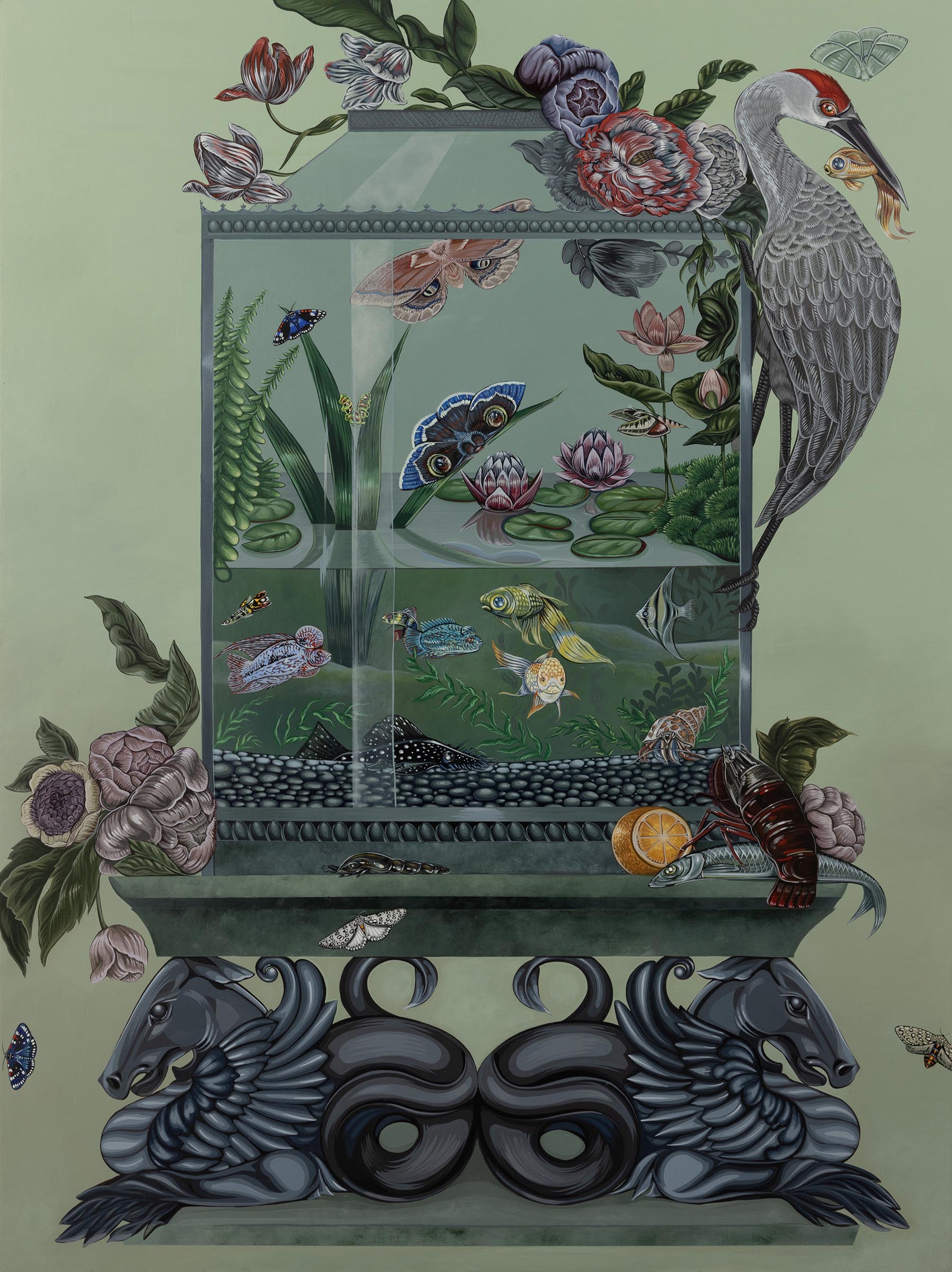
What inspired you to get started on this body of work?
I’ve always been attracted to historical art movements, especially the richness of Baroque and Rococo— for its excess, grandiosity, and indulgence. These motifs naturally find their way into my own work in an off-kilter sort of way.
The inspiration for this series emerged from a deeply personal place—the ups and downs of my life at the time. I was grappling with profound grief from a loss, while also experiencing the joy of planning my wedding with my partner. It was a particularly vulnerable time for me and it’s a side of myself that hasn’t fully surfaced in my art before.
My work is heavily research based, and I found myself deeper down the rabbit hole of historical contexts surrounding love and life’s fragility—exploring Venus, medieval love potions, and the dynamics of royal courts. The Rococo era, with its extravagant and almost wild celebration of love, left a mark on my creative process. I wanted to capture the ephemeral nature of life through symbolism and still life in my pieces.
One historical scandal, in particular, resonated with me—the ‘Affair of Poisons,’ which describes the rise and fall of Madame de Montespan, the prominent courtier and mistress to King Louis XIV. After enlisting the services of a witch, Montespan secretly fed love potions to the King. Unbeknownst to her, these potions were believed to contain lethal substances slowly poisoning the King.
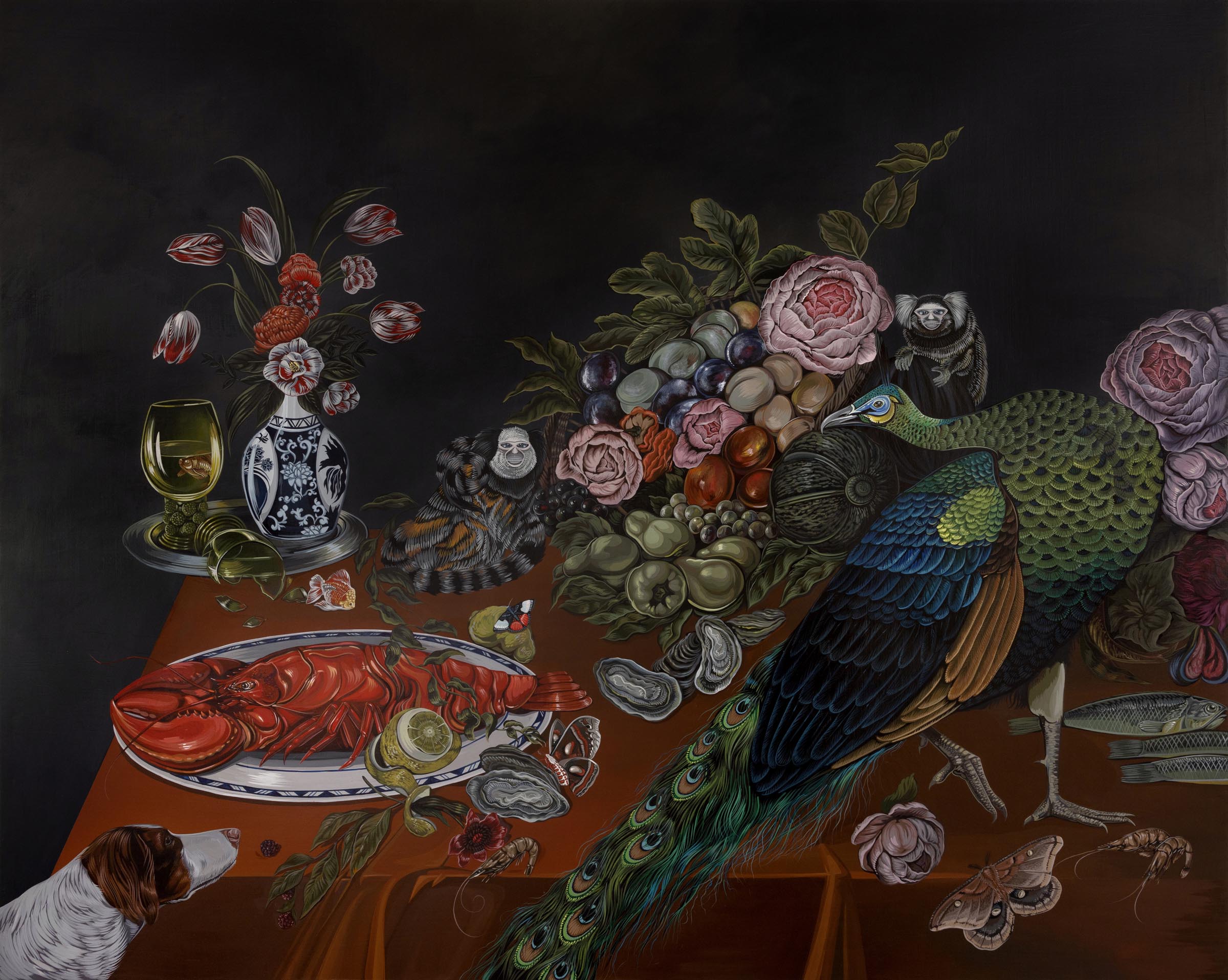
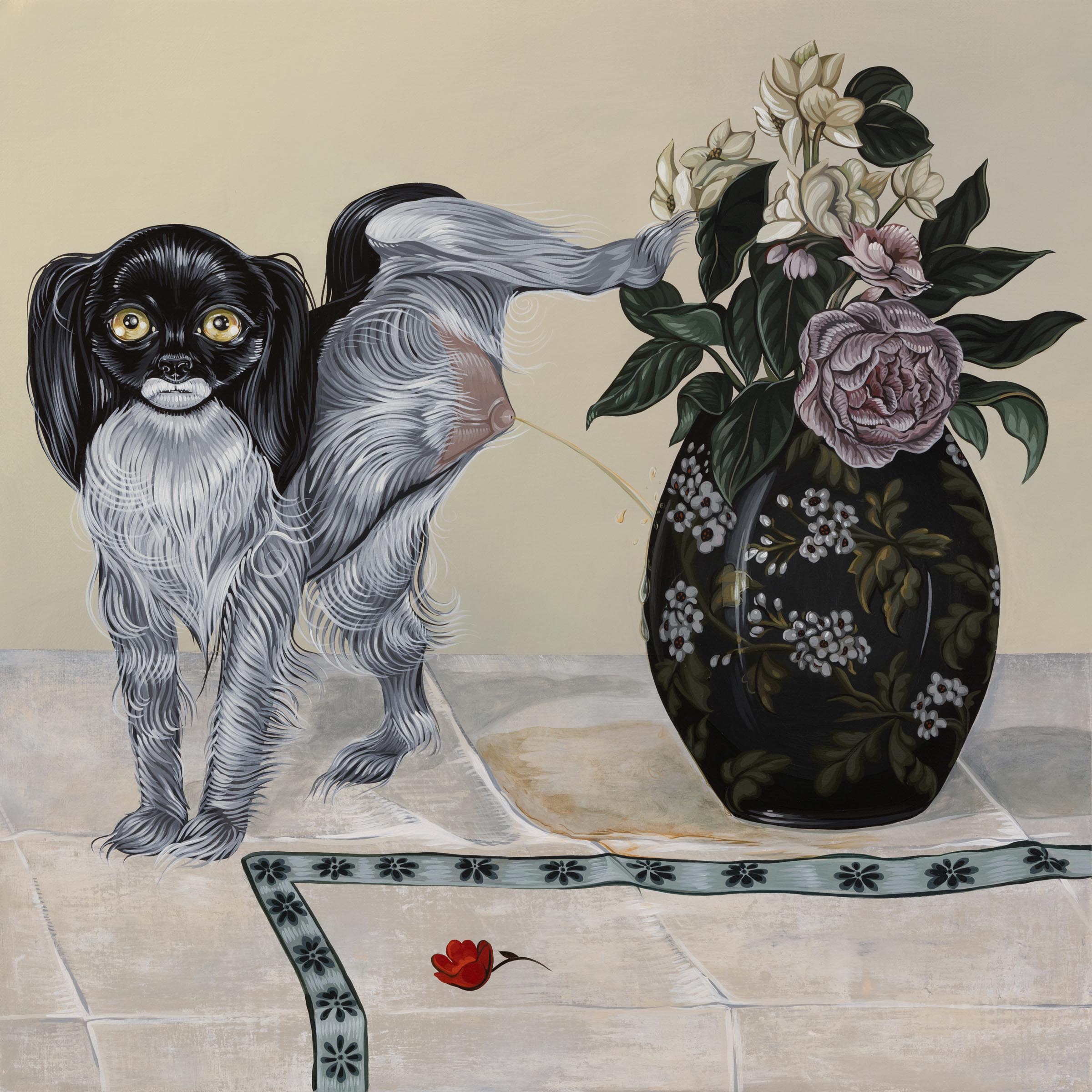
Do you work on distinct projects or do you take a broader approach to your practice?
I see my work as constantly evolving. Different ideas resonate with me at certain points in my life, but there’s always a connection between past and present projects. Each new series helps me dive a bit deeper into my creative world, shaping it further along the way.

What’s a typical day like in your studio?
My studio is in our apartment in Bed Stuy, Brooklyn. I’ve only recently graduated from the smallest to the largest room in the apartment as the demand for solo shows grew, in what felt like a version of musical chairs in our living space.
I’ve always chosen to work from home. I wouldn’t describe myself as agoraphobic by any stretch, but I like being home – a lot! Since I tend to work so many hours, I probably wouldn’t see my dog or fiancé very much if I didn’t. It’s been an evolution, starting from painting in my bedroom to a small mudroom and now to a larger private room. Living in New York for the past 17 years, every extra square foot dedicated to creating art in feels like its own victory.
A typical day in the studio usually starts at 8 am after I wake up, feed, and walk my dog, Louise. After preparing a smoothie and coffee, I’ll do some stretches before I make the short 10-foot journey from the living room to the studio to begin my work. My current challenge is finding new podcasts to listen to for background noise, as I’ve exhausted my usual favorites. Once I start painting, I can go for hours until either my body or Louise signals it’s time for a break. Louise reminds me to take long walks or visit the park, as painting can be meditative but also immersive, sometimes causing me to forget to move.
A day in the studio isn’t always just about painting; it also involves administrative tasks, prepping panels, sketching, and cleaning. Since I handle everything myself, it often feels like I’m working non-stop. However, I strive to find balance whenever possible.
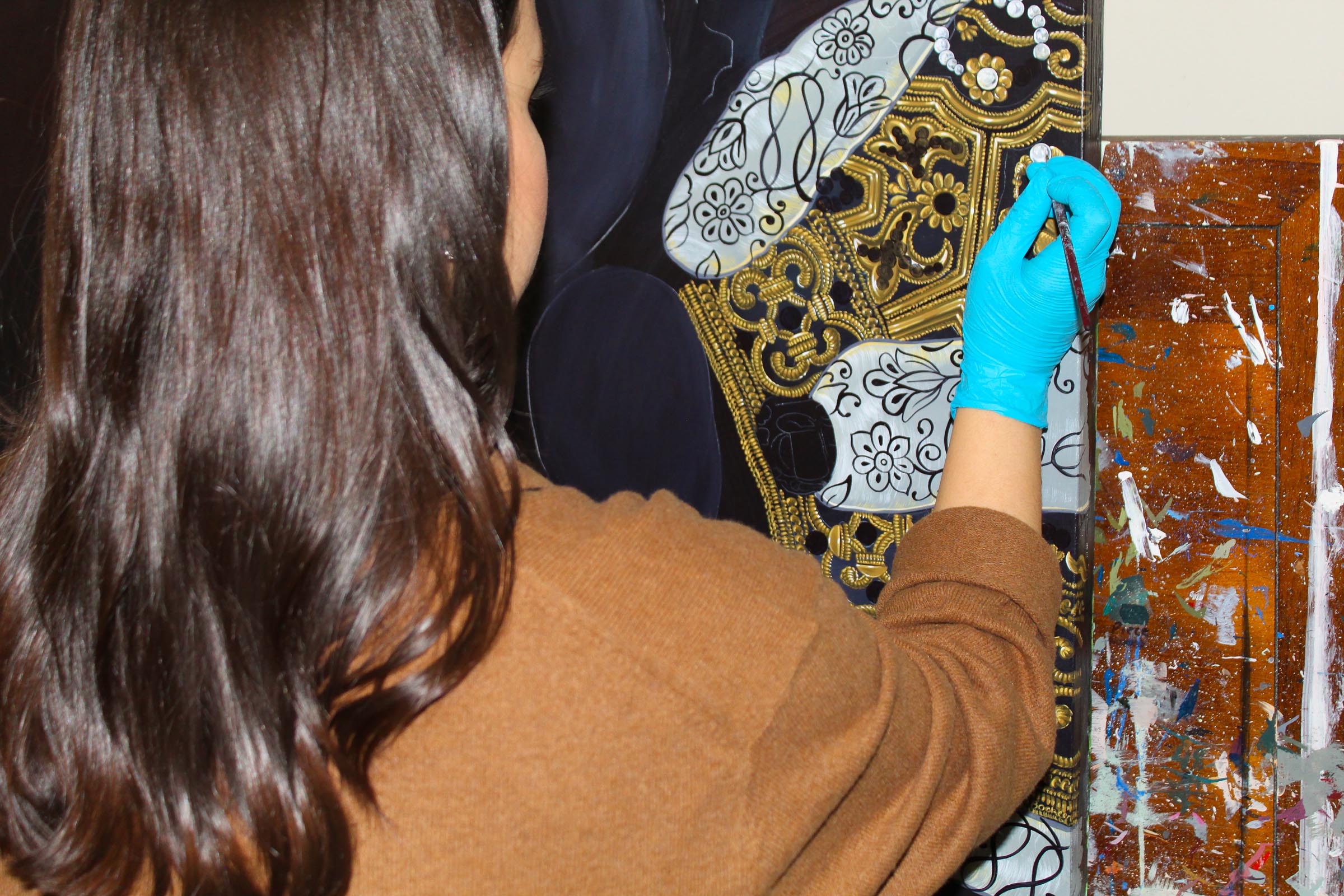

Who are your favorite artists?
It’s always difficult for me to narrow down the list. Jan Van Eyck to Botticelli, Rachel Ruysch’s floral still lifes, Fernand Renard’s surrealism, and Hans Holbein’s portraiture. Leonora Carrington and Franz Sedlacek are always high on my list, along with Fernando Botero. As far as contemporary artists, Louise Bonnet, Ewa Juszkiewicz, Sophie Larrimore, and Matt Hansel immediately come to mind.
Where do you go to discover new artists?
If I can manage it, I try to see art in person as much as possible. Taking a day to gallery hop is always a good way to discover new artists. Instagram is a helpful tool, but I strongly feel that paintings aren’t meant to be seen on a small screen as so much of the intention and detail gets lost.
Learn more about the artist by visiting the following links:



